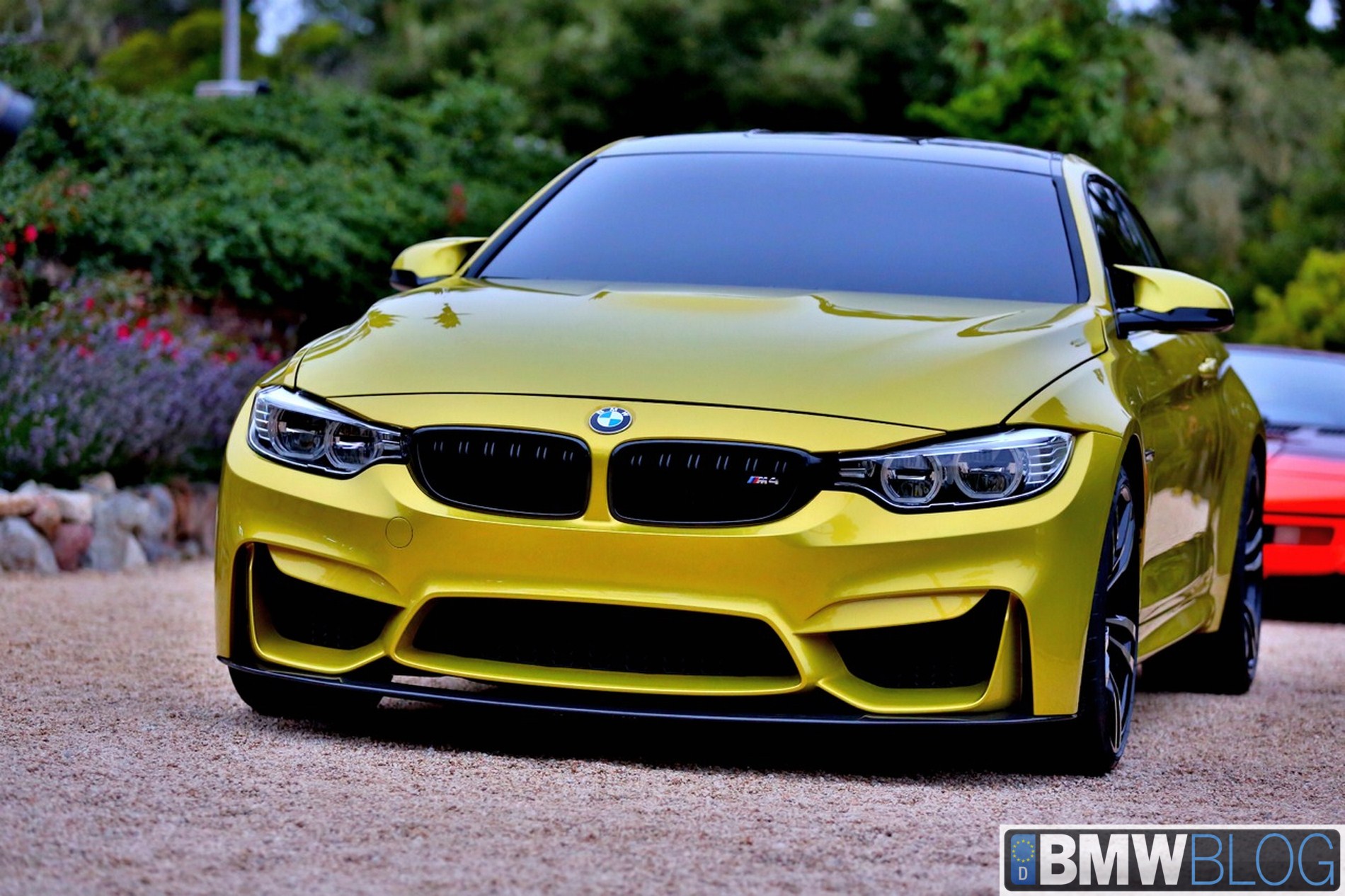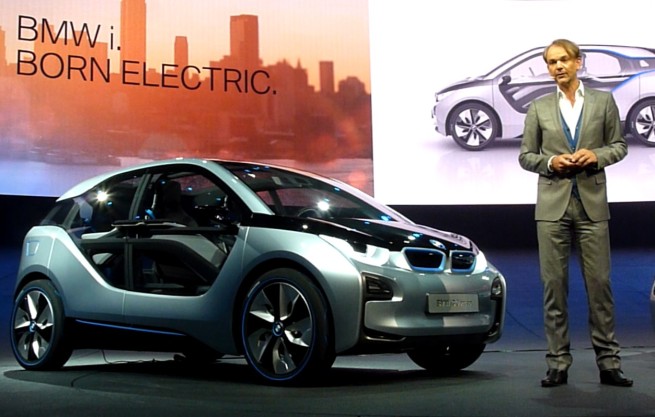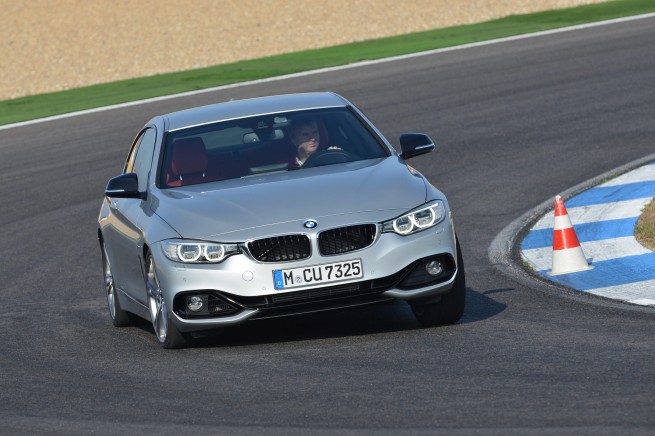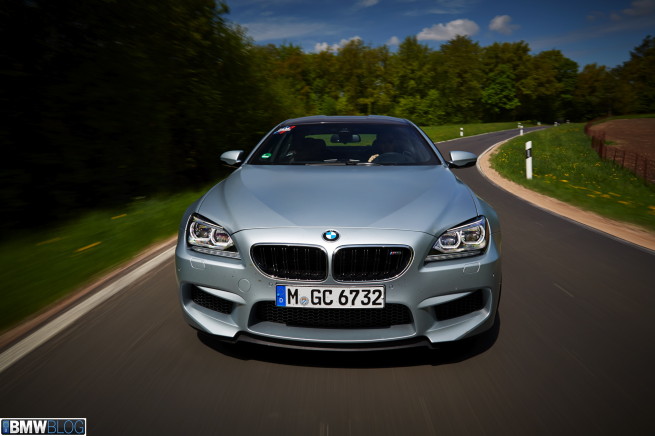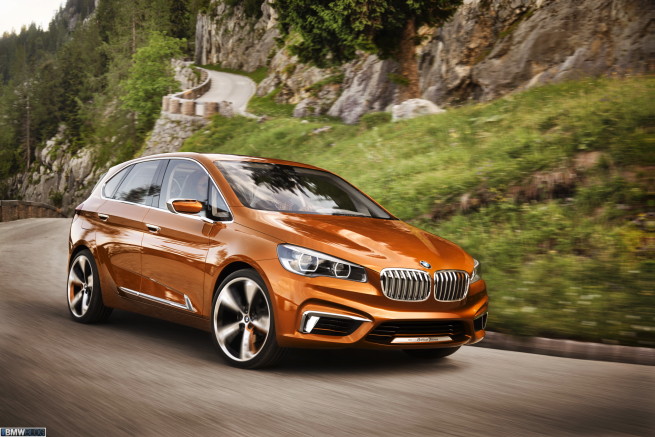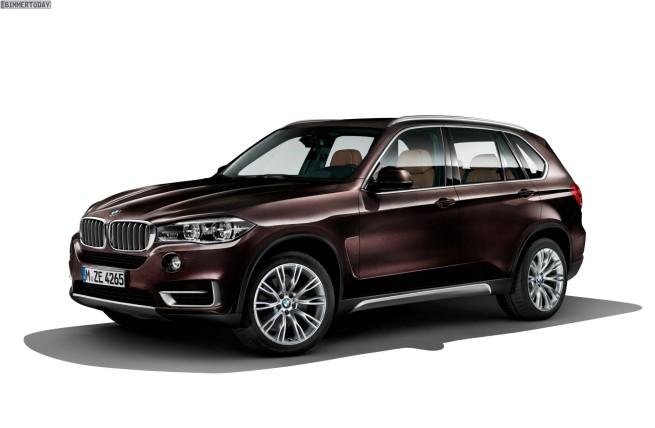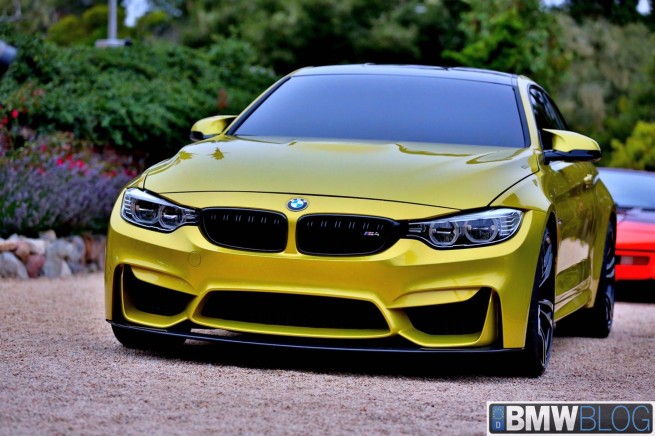At the 2013 Frankfurt Auto Show we sat down with Adrian Van Hooydonk, the man in charge of all design at BMW Group. Van Hooydonk oversees the entire design language at BMW, MINI and Rolls Royce.
The Netherlands-born Van Hooydonk gave us some insight into the current BMW design language and what the future will bring for the brand. When asked about a BMW halo/supercar, the response we received leaves room for interpretation.
BMWBLOG: What’s new in BMW design?
Adrian van Hooydonk: We’ve previewed it a lot, we’ve been talking about it for four years, we shown concept cars, but today, here on the first press day of the Frankfurt Motor Show, we shown both the i3 and the i8, in the production version. It means that we have delivered. Four years ago it was just a vision, it was called Vision EfficientDynamics back then – and now it’s reality. It doesn’t mean just developing these two cars, it also meant developing own new form language to transport this idea of e-mobility – the fact that electric mobility can be premium and can be fun – that is a mission we set for ourselves at the beginning of all of this.
Almost unnoticed goes that we have just almost completed today the new generation of the BMW brand. With the introduction of the 4 Series and the X5 as production models, we’ve almost renewed the entire line-up, from the 1 Series to the 7 Series, and all the X vehicles – now we have a completely revamped line-up of cars and that is the work that we’ve been doing in the past 5 years.
Today for me is quite special, because you can see – especially around BMW and BMW i – how much work has come into it. I am also quite happy about the fact that BMW i is now a part of BMW, but a very distinct and separate part, a sub-brand. It doesn’t take anything away from BMW, it adds to it. Under BMW i we will do the most efficient cars.
We’re still fully behind BMW M – we’re very proud of the racing achievements that we have, the championship that we’ve won last year, and M is doing better than ever. We’re selling more and more cars on the M sub-brand as well, that stands for dynamics and that means the vast majority of the company cars we sell will be a perfect combination of dynamics and efficiency.
And customers now have the complete range of products to choose from, and that stands well in the times ahead, and customers – especially premium customers – will have a choice.
BMWBLOG: Will BMW focus more on lightness when it comes to design?
Adrian van Hooydonk: Yes. With the introduction of BMW i, we have shown how far we have gone in terms of design, aerodynamics or in terms of engineering with lightweight construction. These are things that won’t go away after today, they will stay. And the things that we learned in developing these BMW i products will filter into the whole range. Every one of our cars or products is developed extensively in the wind tunnel because you can make the car aerodynamically more efficient, you can save the fuel or you can gain electric range. When you make cars lighter, again you can save fuel, but almost more importantly probably to our customers is that you improve the handling and increase the driving fun. So these are the things we will continue to put emphasis on.
BMWBLOG: How do materials impact design – especially materials used in the i sub-brand such as CFRP and some of the natural materials seen in the interiors?
Adrian van Hooydonk: In regards to the exterior design and chassis, in the last 10 years and certainly now we have seen a lot of development: we’ve seen injection moulding plastics come in, a lot of aluminum come in, and now carbon fiber. So this is a challenge for us in design because we want to create these exciting shapes. In some ways injection plastic or carbon fiber actually helped us do this because we can do complex shapes; in other ways it makes it a little bit harder, because you have very different materials, all in one car, then it becomes harder to get the same lines to run continuously over four different panels.
But we are able to do that now, so that’s one influence of materials in design. The other is that with the “i” products, especially the i3, in the interior you will find a lot of interesting materials, mixed. We have leather but we also have new materials that have been recycled or made out of recycled materials – we have a cloth in the i3 that is made of recycled PET bottles. The leather we have there can be bought in various colors, but the colors are achieved without any chemicals, rather in a natural way, with natural colorants.
So in the i brand we have done a lot of developments in terms of sustainability in materials and that is also something that won’t go away, something that we can use in all of our other products.
BMWBLOG: You were speaking earlier about the current line-up. What are some the design elements that we see now across the entire family of BMW models?
Adrian van Hooydonk: For the i brand, we want to keep the design elements specific for this sub-brand. The same thing is true for the design elements on M. If we do that then we always make sure that the customer understands what the product is meant to be.
Like I said, the i products are meant to be the most efficient cars that we make, whether that’s electric or plug-in hybrid, or even hydrogen in the future, that doesn’t matter. Under the i brand we can experiment and we can be most innovative, in terms of efficiency. Under the M brand we make cars that are actually designed for the race track, but can be used on the road as well. The main model range is made of cars that have a combination, but in terms of design I think you are always able to see if it’s an M product, a normal BMW or an i product. I think this will actually help the customer make his/her own choice.
BMWBLOG: So rear-wheel drive vs front-wheel drive – What are the design challenges and differences?
Adrian van Hooydonk: We always want to do design that is authentic, meaning that it explains a little bit what kind of driving experience one can expect. Front-wheel drive, in terms of packaging, has some advantages: you have no tunnel going through, you have a flat floor; in general you can achieve a little bit more interior space in a given vehicle size. For instance for the Active Tourer that was a benefit and the gate was a bit more roomy in the interior to play with.
In terms of exterior proportions each vehicle layout has its advantages or challenges. With the Active Tourer it was the first time under the BMW brand that we were dealing with a monovolume, one-box architecture, that is new, but I think that in the concept car – that we are showing here as well and we shown first time in Paris – we have shown that we can make the proportions look fast as well. The car will be fast, will drive like a BMW, regardless of FWD or RWD. Our engineers know how to engineer FWD as well, they’ve been doing it for years with MINI.
BMWBLOG: Moving on to the X5, what was the design idea? Is it more of a progression or an evolution?
Adrian van Hooydonk: We wanted to make sure that people that are interested in X5 from the beginning would be interested again. The X5 has been extremely successful, outsold the competition almost 2-to-1. We knew that we needed to stay true to this original idea, of a car that will allow you to go anywhere in style. It is a very luxurious car and what we have done in the new design is that we have increased the level of luxury and made the car a little bit lighter, and increased the dynamics of the vehicle. I think that’s what the customers always appreciated about this car and of course, each vehicle generation has to raise the bar in that field. There is also the competition that is trying to “eat our lunch”, and this means that in this generation we raised the dynamics and the level of luxury in that car.
BMWBLOG: Does BMW design need a halo car?
Adrian van Hooydonk: BMW i8 is a halo car, and I’ve been working on that car with my team for the past 4 years. I know how complex and innovative that car is from a technical point of view, how much fun it will be to drive that car, how spectacular your arrival is when you show up in that car. If that’s not a halo car, then I don’t know what is.
To me, and possibly also to you and your readers, a halo car doesn’t have to be top of the range. I think we would consider the 1 Series M also a halo car, and that’s a car that still has a strong fan community, and I like compact sporty cars. Another car that I would consider a halo car is the M135i. There’s one more car that we still have to renew in our whole lineup, and we’re gonna do that, then who knows?
BMWBLOG: Does the BMW M4 has the potential to become an iconic car? There has been such a debate related to the change in the naming convention – M3/M4. Do you think the design will help bring the car to an iconic status?
Adrian van Hooydonk: I think so, yes, because we’ve shown the concept car and the people saw that car and the name: “Oh My God, that’s not an M3, it’s an M4.”
That issue was discussed previously, but I think ultimately it’s about performance for that kind of vehicle and how it looks. It has to show its muscles and I think it does. We’ve already got very good reviews for the normal 4 Series, and I think that with the M4, once it goes to the market, we’re quite optimistic. The name thing will become secondary. We respect our history and heritage a lot, but we are creating the future as we go along. And there will still be an M3, so I think it will be alright.
BMWBLOG: Personally would you choose the M3 or the M4?
Adrian van Hooydonk: Personally I’m a 2-door kind of guy, so that’s what I drive now and I would take that for a yes.
BMWBLOG: Adrian, thank you for taking the time to speak to us today!


